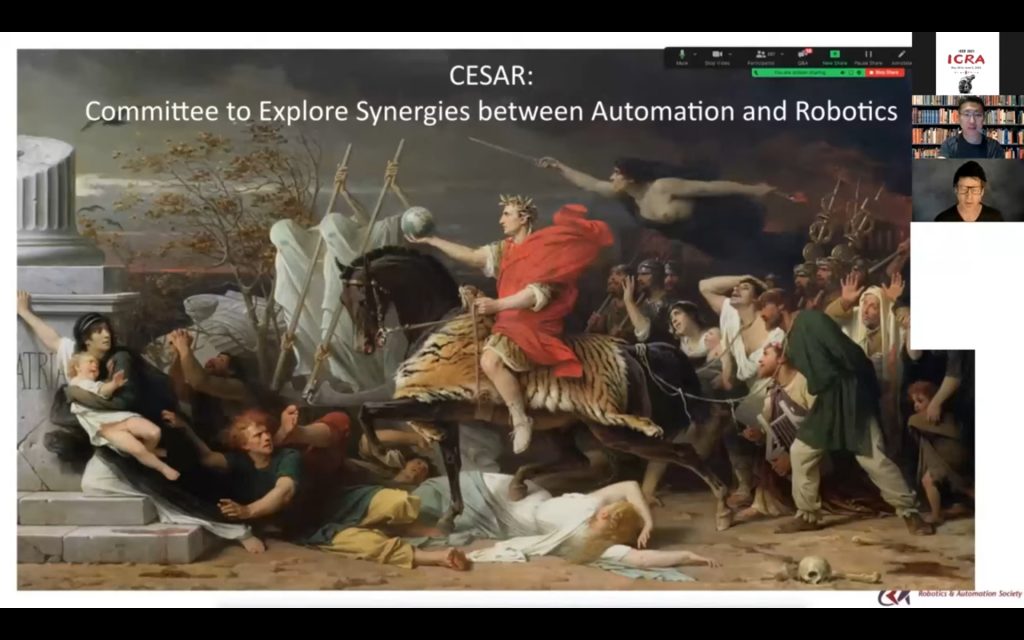Digital Transformation and the Smart Factory
Researchers develop a new robot that can efficiently navigate sidewalks in urban environments
What can I do here? Learning new skills by imagining visual affordances

How do humans become so skillful? Well, initially we are not, but from infancy, we discover and practice increasingly complex skills through self-supervised play. But this play is not random – the child development literature suggests that infants use their prior experience to conduct directed exploration of affordances like movability, suckability, graspability, and digestibility through interaction and sensory feedback. This type of affordance directed exploration allows infants to learn both what can be done in a given environment and how to do it. Can we instantiate an analogous strategy in a robotic learning system?
On the left we see videos from a prior dataset collected with a robot accomplishing various tasks such as drawer opening and closing, as well as grasping and relocating objects. On the right we have a lid that the robot has never seen before. The robot has been granted a short period of time to practice with the new object, after which it will be given a goal image and tasked with making the scene match this image. How can the robot rapidly learn to manipulate the environment and grasp this lid without any external supervision?
Sinergies between automation and robotics

In this IEEE ICRA 2021 Plenary Panel aimed at the younger generation of roboticists and automation experts, panelists Seth Hutchinson, Maria Pia Fanti, Peter B. Luh, Pieter Abbeel, Kaneko Harada, Michael Y. Wang, Kevin Lynch, Chinwe Ekenna, Animesh Garg and Frank Park, under the moderation of Ken Goldberg, discussed about how to close the gap between both disciplines, which have many topics in common. The panel was organised by the Ad Hoc Committee to Explore Synergies in Automation and Robotics (CESAR).
As the IEEE Robotics and Automation Society (IEEE RAS) explain, “robotics and automation have always been siblings. They are similar in many ways and have substantial overlap in topics and research communities, but there are also differences–many RAS members view them as disjoint and consider themselves purely in robotics or purely in automation. This committee’s goal is to reconsider these perceptions and think about ways we can bring these communities closer.”